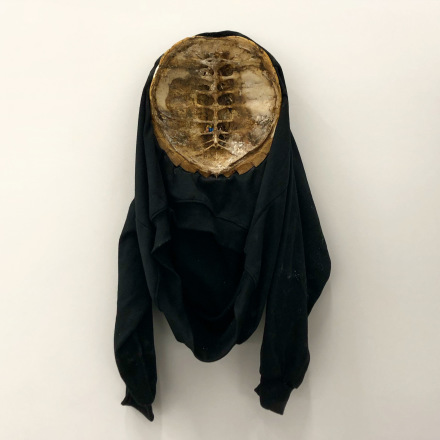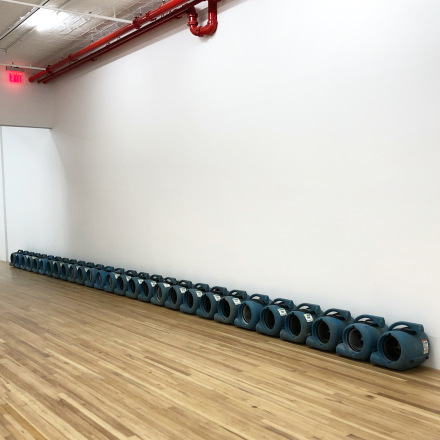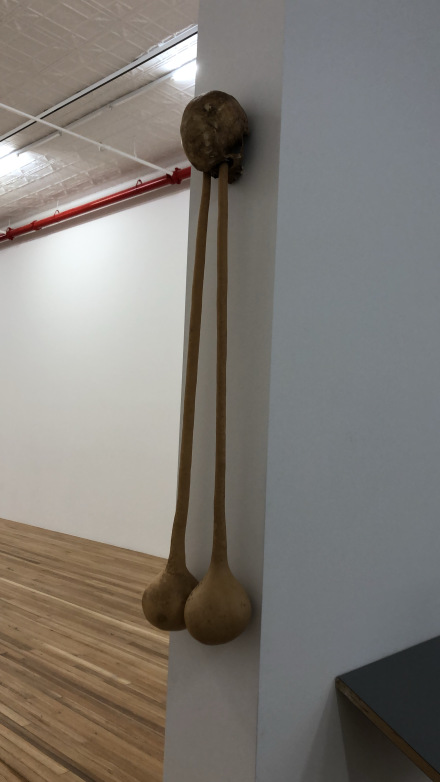
Michael E. Smith (Installation View)
Currently at Andrew Kreps Gallery, a line of floor-fans run in a single file through the doorway of the main gallery space, emitting a slight whine that makes the presentation of the work all the more illusive. Unable to tell if the fans are on or if there is some other element emitting the sound, the arrangement conjures a strange sense of animated material, a sort of life outside the human body that makes the viewer question just what they are viewing. So goes the work of artist Michael E. Smith, whose arrangements frequently mine this sort of uncertainty from the familiar objects of the world around us.

Michael E. Smith (Installation View), all images via Art Observed
Smith’s work utilizes existing materials – clothing, plastics, and machinery, as well as natural elements like coral or taxidermy. These collected, once-familiar objects are stripped of their intended purpose and assembled together to create new sculptural compositions. Through this process of alteration, the elements of Smith’s work are transformed beyond their origin or value, now seen as tools for communication and vessels of their own histories. Interpreted through a series of binaries, such as the natural versus the artificial, the human versus the technological, or life versus death, his assemblages emotively suggest violence, decay, poverty, and injustice in a manner not easily translated into language. Here, sweatshirts and human skulls are turned towards the comical and the unnerving at turns, their referents to the human body also functioning as a point where mortality and decomposition are presented in relation to the sign systems of the world, very much alive and present in the room.

Michael E. Smith (Installation View)
This draws particular strength from the space itself. The site of installation is an active participant in the making of Smith’s work, as he organizes and installs his sculptures in relation to each other and to the existing architecture, here leaving considerable amounts of space between each work, and allowing the collision of each item, and their respective conceptual payloads to breathe and interact. One set of works, pieces of bone bound up in black shirts, climbs the wall of the gallery, conjuring a sort of ghostly swarm of bodies flying overhead. Recalling strategies of Minimalist and Conceptualist movements that emerged in the United States in the 60s and 70s, Smith employs the negative space around his works to create a palpable experience within the exhibition. Yet here, Smith’s work seems to explore and reposition that same sense of minimalism as a space in which the specific uses and implications of his material fill in empty space, narratives of mortality, of human participation, and of human absence speaking within the gallery walls.
The show closes March 28th.

Michael E. Smith (Installation View)
— D. Creahan
Read more:
Andrew Kreps [Exhibition Site]



